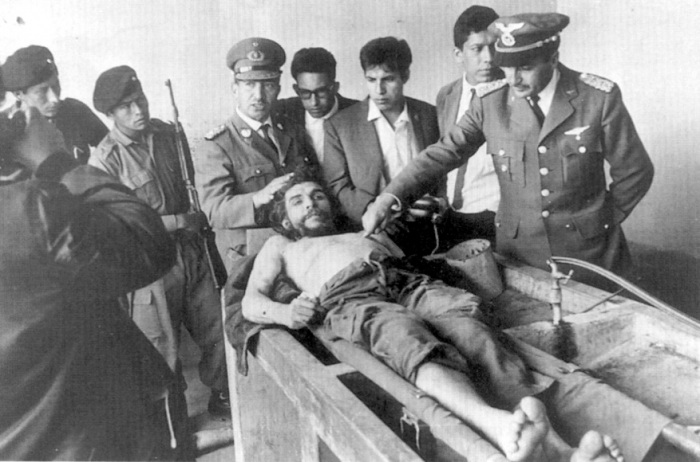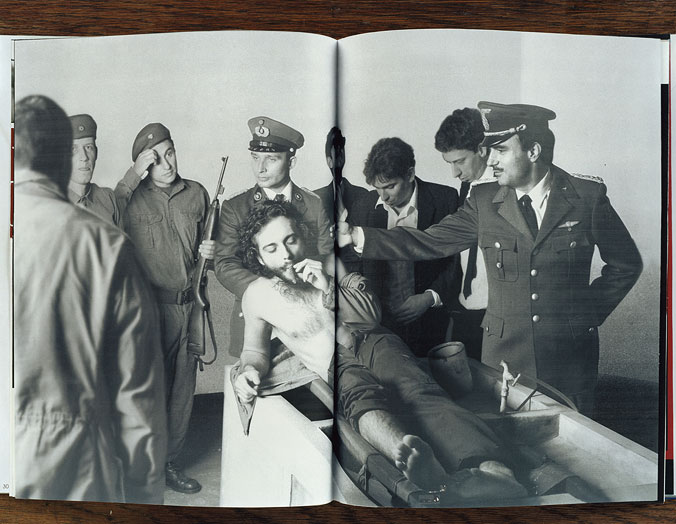 |
||||||||||||||||||||
 |
||||||||||||||||||||
|
Combining the famous painting by Mantegna with the crude revolutionary photograph of Che Guevara captured and killed, has an inherent power of expression as well as a symbolic one. To the point that it is not even an original idea but a kind of archetype, a Platonic idea slipped through the mass media in the collective experience of all who have seen both figures. The artistic value that makes a link to this seemingly arbitrary juxtaposition or even blasphemous one, is the forgotten feeling of Pietas. A concept, if we want to restore in its authentic old matrix language, full of something irretrievably lost today: the depth of respect to both human and religious devotion. Che Guevara disappeared from the political scene in April 1965 and his whereabouts have been much debated since. The day after his execution on October 10, 1967, Guevara’s body was then lashed to the landing skids of a helicopter and flown to nearby Vallegrande where photographs were taken, showing a figure described by some as “Christ-like” lying on a concrete slab in the laundry room of the Nuestra Señora de Malta hospital. The above iconic shot was taken by Freddy Alborta. It is probable that Che would have been compared to Christ being taken down from the cross in any case. He was in his 30s when he died, he had long hair and a beard, and he gave his life for the cause of the working class and the peasants in a deeply Catholic country. And probably his image would only grown in its inspiration – that change would arrive in Bolivia and that the poor could eventually live in dignity. No one is sure how Alborta’s post-mortem photograph of Che Guevara was released, but English art critic John Berger observed that it resembled Andrea Mantegna's Lamentation over the Dead Christ. (John Berger, 1975)
Some images today are striking for their strength, relevance and ability to concentrate on one scene an event. Below the photo, the icon: under the picture of the lifeless body of Che Guevara, here is the figure of Christ painted by Mantegna, as if the representation was provided with an unconscious, a repressed memory brought to light and revealed.
|


 What were Alborta’s feelings and impressions? Did he know of John Berger’s interpretations of his own photo? Alborta did not, but he was very aware that this was not simple photojournalism. The photographer said he worked very carefully, knowing that he was in the presence of an already legendary figure, a Christ figure even, and that such a moment comes once in a lifetime.
What were Alborta’s feelings and impressions? Did he know of John Berger’s interpretations of his own photo? Alborta did not, but he was very aware that this was not simple photojournalism. The photographer said he worked very carefully, knowing that he was in the presence of an already legendary figure, a Christ figure even, and that such a moment comes once in a lifetime.